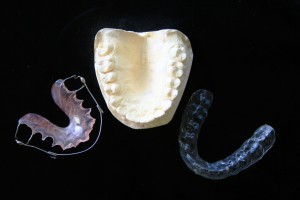 Orthognathic surgery, also known as corrective jaw surgery is the solution to a wide range of minor and major skeletal and dental irregularities. This procedure can also dramatically enhance your appearance, though its main purpose is to correct functional problems. This procedure does involve a long term plan that includes orthodontics before and after your surgery, and can take up to a few years to complete. Thanks to the development of new techniques and technology, the time needed to complete treatment has been reduced, and recovery has also been enhanced to get you back to normalcy sooner.
Orthognathic surgery, also known as corrective jaw surgery is the solution to a wide range of minor and major skeletal and dental irregularities. This procedure can also dramatically enhance your appearance, though its main purpose is to correct functional problems. This procedure does involve a long term plan that includes orthodontics before and after your surgery, and can take up to a few years to complete. Thanks to the development of new techniques and technology, the time needed to complete treatment has been reduced, and recovery has also been enhanced to get you back to normalcy sooner.
There are a number of problems that may be solved by corrective jaw surgery. If you have difficulty biting, chewing, or swallowing food, this may be the right treatment for you. Issues include chronic jaw or jaw joint (TMJ) pain, excessive wear of the teeth, unbalanced facial appearance from the front (or side), facial injury, sleep apnea, and birth defects, among other challenging conditions. Receiving corrective jaw surgery and having a normal bite can improve chewing, speech, and facial aesthetic. This procedure can also protect your teeth from future problems like decay, gum disease, and chipping. In some patients, it may also relieve breathing problems and sleep apnea.
There are three principal types of jaw surgery procedures: upper jaw surgery, lower jaw surgery, and chin procedures. The right procedure for you will be determined by your oral surgeon and orthodontist. Depending on your condition, you may only need either upper or only lower jaw surgery, but it is possible to need both. Upper jaw surgery (also known as Lefort-I osteotomy) is performed to correct excess or a deficiency of the upper jaw, it can also enhance the mid-facial aesthetic. Lower jaw procedures (otherwise known as mandibular osteotomy) can provide either advancement or reduction of the lower jaw to a proper relationship with the upper jaw, and the rest of the face. Chin procedures serve cosmetic purposes. This surgery can augment or retract the chin to attain better facial balance. This procedure can be completed by itself or in conjunction with upper and lower jaw surgery.
As mentioned earlier, corrective jaw surgery requires a serious amount of time, with timelines and specific staging organized by an oral surgeon and orthodontist. Treatment consists of three phases: pre-surgical orthodontics, surgical and post-surgical orthodontics.This information is not intended to stand in place of a professional diagnosis. Please consult with our oral surgeon and orthodontist to see what the best treatment is for you. To learn more about oral surgery, please see Dr. Kazemi’s information page, here.
